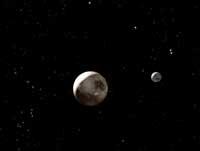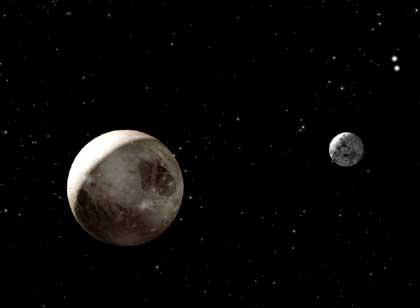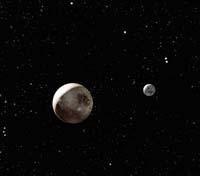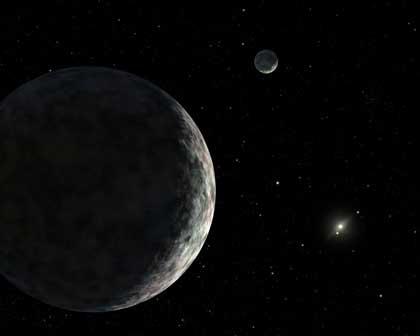Pluto in peace
2008/07/13 Lakar Iraizoz, Oihane - Elhuyar Zientzia

Specifically, a plutoid is defined as: It is a body that rotates around the Sun, in an orbit greater than Neptune, with enough mass (and gravity force) to hold the circular appearance and other bodies in its own orbit. That is, plutoids are bodies of similar characteristics to those of Pluto.
At the moment they know two plutoids: Pluto himself, of course, and Eris. However, scientists hope that as technology advances more plutoids will be discovered. The third dwarf planet known, Zeres, has the characteristics of Pluto and Eris, but turns between Mars and Jupiter instead of turning beyond Neptune.
Therefore, Ceres is not a plutoid. And scientists have not created another category (not even intention to create) for the Nanic planets similar to Ceres. The explanation they have given for this is that Zeres is the only body of this type, so it is not worth creating a new category.

He has had to go a long way to get the current category of the plutoid name. This type of names and classifications corresponds to the UAE. Specifically, the names of small space bodies are given by the Commission for the Nomenclature of Small Bodies within the IAU. This group therefore proposed the name, which was subsequently approved by the Planetary Systems Nomenclature Working Group and finally validated by the UAE Executive Committee in early June.
No lack of opposition
The UAE has about 10,000 members and, as in many other organizations, not all of them are in line with the decisions the organization officially makes. This has also occurred in the case of plutonas and plutoids.
Some astronomers believe that getting out of the Pluto planet category was a mistake. According to them, a planet is a circular object that revolves around a star. To be round it must have a minimum mass, since the greater the mass, the greater the force of gravity, and it is only able to keep the circular form from a certain value. Thus, objects with enough mass to be round have geological properties that smaller objects do not have, such as vulcanism, tectonics and atmosphere.

Therefore, they consider that it is not necessary a step forward, nor useful to name dwarf planet to Pluto, or to classify it as plutoid between dwarf planets. This is the opinion of Alan Stern, principal investigator of the New Horizons mission, sent by NASA to study Pluto. Upon learning of the designation, he said that the name of hemorrhoids would be as useful as plutoid, as both would be names of a totally insignificant classification.
In addition, Stern said that to make that decision they took into account the opinion of very few members of the UAE. According to him, the commissions that thought, approved and estimated the name only have a dozen members, while the decision has been made on behalf of the entire UAE. Of course, the representatives of the UAE have expressed the opposite, that very few oppose the decision adopted, but make a very loud noise.
How many heads, so many opinions, even with an object five thousand five hundred million kilometers from us. So we are!
Published in 7K.

Gai honi buruzko eduki gehiago
Elhuyarrek garatutako teknologia





